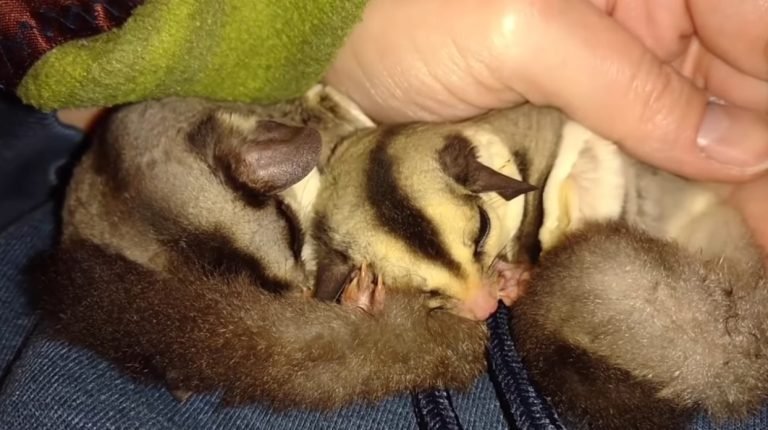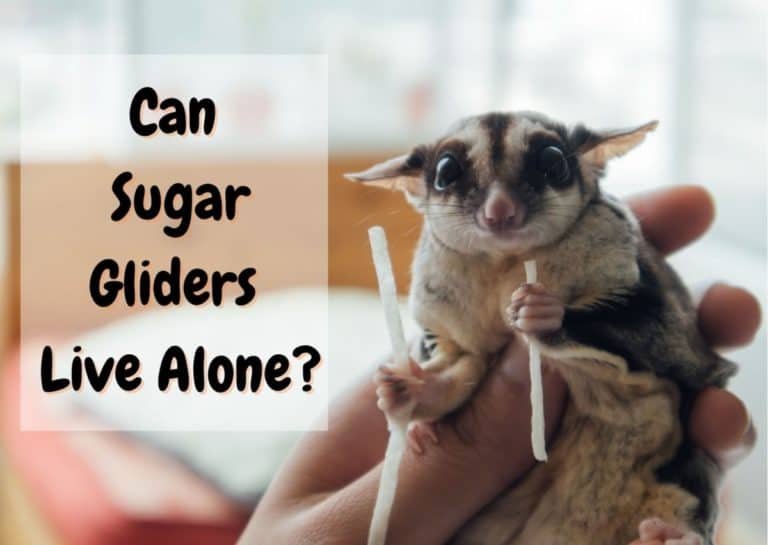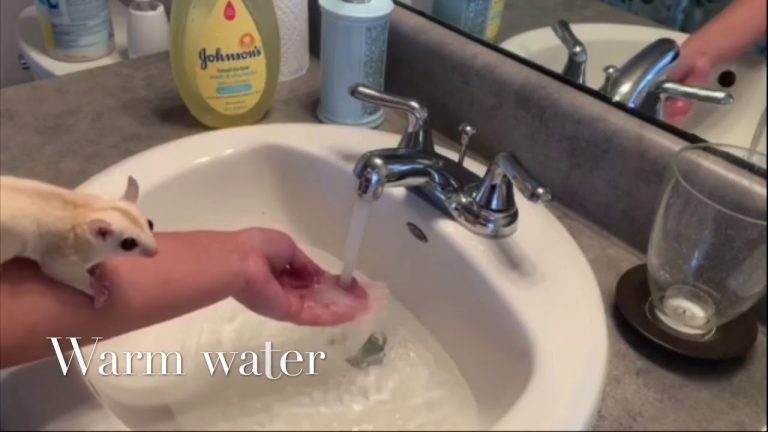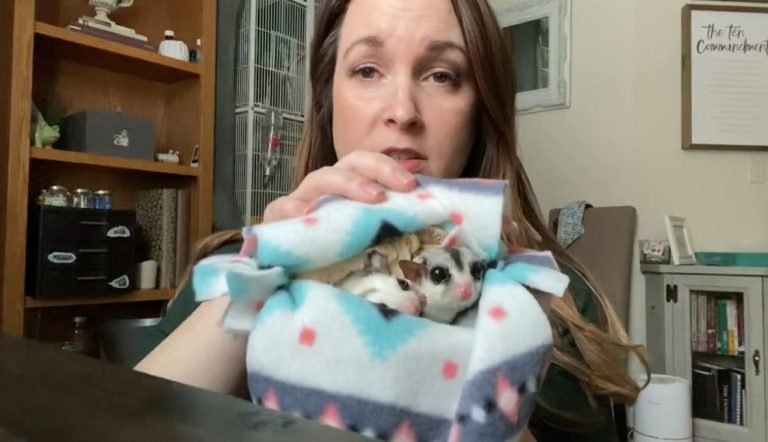Sugar Glider Hissing
Ever wondered why sugar gliders hiss? These adorable creatures, known for their playful antics and big eyes, have a surprising way of communicating. Hissing is their thing! It’s like their own secret language that only they understand. But what does it mean?
Well, sugar gliders use hissing as a way to express themselves. It’s a common behavior among these little va-va-vooms of the animal kingdom. Understanding the purpose behind this unique communication style is crucial for providing them with the best care possible.
So, let’s dive into the world of sugar glider hissing! We’ll explore why they do it, when they do it, and what it means in different situations. Get ready to unravel the mysteries of these totes magoats creatures and become an expert on all things sugar glider hissing.
Buckle up and get ready for an exhilarating journey into the intriguing world of sugar gliders and their fascinating hissing behavior!
Understanding Sugar Glider Sounds and Behaviors:
Sugar gliders, those adorable little creatures, have a unique way of communicating with us. They use a combination of sounds and behaviors to convey their needs and emotions. By paying attention to these cues, we can better understand our furry friends.
Sounds:
One of the primary ways sugar gliders communicate is through sounds. Here are some common vocalizations you may hear:
- Hissing: If you’ve ever heard your sugar glider hiss, don’t be alarmed! Hissing is a natural sound they make when they feel threatened or frightened. It’s their way of warning others to stay away.
- Chirping: Sugar gliders are known for their distinctive chirping sound. This cheerful noise usually indicates happiness or excitement. It’s like they’re saying, “Hey, I’m having a great time!”
- Barking: When sugar gliders bark, it’s not the same as a dog’s bark. Their bark is more like a high-pitched yap that they use to communicate distress or alarm. It could mean they’re scared or in pain.
Behaviors:
In addition to sounds, sugar gliders also express themselves through various behaviors:
- Grooming: Sugar gliders groom themselves and each other as a way of bonding and showing affection. It’s their version of giving hugs and kisses!
- Marking Territory: These little critters have scent glands on their chests that they use to mark their territory. If you see your sugar glider rubbing its chest on objects or even on you, it means they’re claiming ownership.
- Glider Leaping: Sugar gliders are excellent jumpers and love leaping from one place to another using the skin flaps between their limbs called patagiums. This behavior showcases their agility and playful nature.
By observing these sounds and behaviors in our sugar gliders, we can better understand their moods and needs. So next time you hear a hiss or witness an acrobatic leap, remember that your sugar glider is trying to tell you something!
Exploring Nocturnal Behavior in Sugar Gliders:
Sugar gliders, fascinating creatures known for their unique behaviors, exhibit intriguing nocturnal habits. Understanding these behaviors is crucial in providing them with suitable environments to thrive.
- Sugar gliders are nocturnal animals: These adorable marsupials are most active during the night. Unlike humans who prefer daylight, sugar gliders have adapted to the darkness and find comfort in low-light conditions.
- Thriving in low-light conditions: Sugar gliders possess remarkable adaptations that enable them to navigate and thrive during nighttime hours. Their large eyes have a high concentration of rod cells, which enhance their vision in dim light. They rely on their acute sense of hearing and smell to compensate for limited visibility.
- Creating suitable environments: To ensure the well-being of sugar gliders, it’s essential to replicate their natural habitat as closely as possible. This includes providing appropriate lighting conditions during the day and ensuring a dark environment at night. By mimicking their natural surroundings, we can help reduce stress levels and promote healthy behavior.
Understanding the nocturnal behavior of sugar gliders allows us to create an environment that caters to their specific needs. By maintaining proper lighting schedules and minimizing disturbances during nighttime hours, we can support these captivating animals’ well-being and overall health.
Remember: sugar gliders are creatures of the night; let’s embrace their unique lifestyle!
Decoding Different Vocalizations of Sugar Gliders:

Sugar gliders, those adorable and social marsupials, have a unique way of expressing themselves through various vocalizations. From chirping to barking, crabbing to hissing, these little creatures use different sounds to communicate their needs and emotions. Let’s explore the fascinating world of sugar glider vocalizations and what they mean.
- Chirping: One of the most common sounds sugar gliders make is a series of high-pitched chirps. These chirps can signify contentment, excitement, or even a call for attention. It’s like their way of singing happily in their own language.
- Barking: When sugar gliders feel threatened or agitated, they may let out short bursts of barks. This serves as a warning signal to potential predators or intruders that they are ready to defend themselves. It’s similar to a dog’s bark but with its own distinct tone.
- Crabbing: If you hear your sugar glider making a crab-like noise, don’t worry; it’s not trying to imitate its crustacean friends! Crabbing is a defensive vocalization that occurs when they feel scared or cornered. It sounds like a mix between hissing and growling and is meant to intimidate potential threats.
- Hissing: Ah, the infamous hiss! Sugar gliders may resort to hissing when they are feeling extremely threatened or annoyed. It’s their way of saying “back off” and letting others know that they are not in the mood for interaction. Imagine it as their version of an angry cat hiss!
Each vocalization plays an important role in the sugar glider’s communication repertoire. Whether it’s chirping with joy, barking in defense, crabbing when frightened, or hissing out annoyance – these different sounds help them express various things in their own unique way.
So next time you hear your sugar glider making different noises, pay attention to what they might be trying to communicate. It’s their own little language, filled with chirps, barks, crabs, and hisses that reveal their emotions and needs. These marsupials sure know how to vocalize their thoughts without saying a word!
Unveiling the Meaning Behind Defensive Behaviors:
Sugar Glider Hissing: A Sign of Aggression or Discomfort
- When threatened or scared, sugar gliders may display defensive behaviors.
- Hissing is one such defensive behavior that signals aggression or discomfort.
Recognizing these behaviors helps us ensure their safety and well-being. It’s important to understand what sugar glider hissing means and how to address it appropriately. Here’s a closer look at this fascinating aspect of their behavior:
- Hissing as a Sign of Aggression: When sugar gliders feel threatened, they may resort to hissing to communicate their intent to fight. This aggressive behavior serves as a warning sign for potential adversaries.
- Hissing as an Expression of Discomfort: Sometimes, sugar gliders hiss not out of aggression but due to feeling uneasy or uncomfortable in certain situations. It could be caused by changes in their environment, such as loud noises, unfamiliar scents, or sudden movements.
- Addressing the Problem: If your sugar glider starts hissing frequently or exhibits other defensive behaviors, it’s crucial to identify the underlying cause and take appropriate action. Here are some steps you can take:
- Assess the environment: Check for any factors that might be causing stress or discomfort for your pet.
- Provide a safe space: Create a secure and quiet area where your sugar glider can retreat when feeling threatened.
- Offer treats and positive reinforcement: Rewarding calm behavior with treats can help alleviate anxiety over time.
- Gradual introduction to change: If there have been recent changes in their surroundings, introduce them slowly so that your pet has time to adjust.
- Seek professional advice if necessary: If the hissing persists despite your efforts, consult with an experienced veterinarian who specializes in exotic pets.
Understanding sugar glider hissing is essential for maintaining a harmonious relationship with these unique creatures. By recognizing and addressing their defensive behaviors, we can ensure their well-being and foster a trusting bond between us and our adorable companions.
Recognizing Warning Signs in Sugar Gliders:
Hissing is a common sign that pet sugar glider owners should pay attention to. This hissing sound can indicate potential danger or discomfort for these adorable creatures. As responsible owners, it’s crucial to recognize these warning signs and take appropriate action.
When a sugar glider feels distressed or threatened, they may resort to hissing as a way to communicate their unease. Here are some key points to consider:
- Certain signs indicate that a sugar glider might be feeling distressed or threatened.
- Hissing can be a warning sign of potential danger or discomfort for them.
- Being attentive to these warning signs allows us to address any issues promptly.
As sugar glider owners, we need to understand the significance of hissing and what it implies for our pets’ well-being. It serves as an alarm bell indicating trouble brewing in their tiny world. By recognizing this sign, we can intervene and provide the necessary support and comfort.
If you notice your sugar glider hissing, it’s essential not to dismiss it as mere noise. Instead, consider the following steps:
- Assess the environment: Look for any potential sources of danger or stress that could be triggering your pet’s distress.
- Evaluate their physical condition: Check for any visible injuries or signs of illness that may be causing discomfort.
- Offer reassurance: Speak softly and gently interact with your sugar glider without overwhelming them.
- Provide a safe space: Ensure they have access to a secure and comfortable enclosure where they can retreat if needed.
Remember, every sugar glider is unique, so understanding their individual behavior patterns will help you better interpret their hissing signals. Regular interaction and observation will enable you to establish a deeper bond with your furry friend while keeping them out of harm’s way.
Final Thoughts
In conclusion, understanding sugar glider sounds and behaviors is essential for any owner or enthusiast. By exploring their nocturnal behavior and decoding different vocalizations, we gain valuable insights into their fascinating communication methods. Unveiling the meaning behind their defensive behaviors allows us to create a safe and comfortable environment for these unique creatures.
Recognizing warning signs in sugar gliders is crucial for their well-being. Whether it’s hissing, barking, or crabbing, these vocalizations serve as indicators of potential threats or discomfort. Being attentive to these cues helps us address any issues promptly and appropriately.
To ensure a positive experience with sugar gliders, it is important to remember that they require specific care and attention. Providing them with a suitable habitat, proper nutrition, and plenty of mental stimulation are key elements for their overall health and happiness.
If you’re considering becoming a sugar glider owner or already have one as a companion, take the time to educate yourself about their unique needs. Joining online communities or seeking advice from experienced owners can provide valuable insights and support.
Appreciating the fascinating world of sugar glider hissing opens up an opportunity to develop a deeper bond with these captivating creatures. By embracing their distinctive behaviors and sounds, we can create an enriching environment where they thrive.
FAQs
1.Why do sugar gliders hiss?
Sugar gliders may hiss as a defensive mechanism when they feel threatened or scared. It serves as a warning sign to potential predators or intruders.
2.Can sugar gliders stop hissing?
Yes, sugar gliders can stop hissing once they feel safe and secure in their surroundings. Building trust through gentle handling and providing a stress-free environment can help alleviate this behavior over time.
3.Is it normal for sugar gliders to hiss at each other?
Yes, hissing can be a part of their social interactions. It can occur during territorial disputes or when establishing hierarchy within a group.
4.How should I respond if my sugar glider hisses at me?
When a sugar glider hisses, it’s important to give them space and avoid any sudden movements. Assess the situation for potential stressors and try to create a calm environment. Building trust through patience and positive reinforcement is key.
5.Can sugar gliders learn not to hiss?
With proper care, handling, and socialization, sugar gliders can become more comfortable with human interaction over time. Consistency and patience are essential in helping them feel secure and reducing instances of hissing.
6.Are there any health issues associated with excessive hissing in sugar gliders?
Excessive hissing may indicate underlying health problems or chronic stress in sugar gliders. If you notice persistent or abnormal hissing, it is advisable to consult an exotic veterinarian for a thorough examination.







